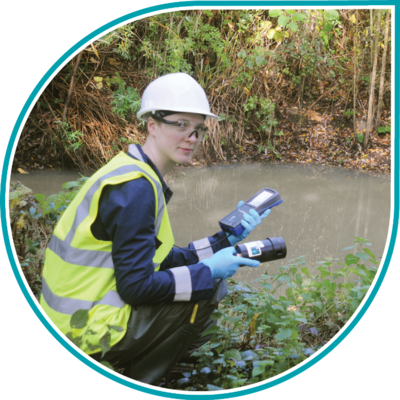
Contact Details:
EngNet - Engineering Network
11121 Carmel Commons Blvd.
Charlotte
NC
28226
United States of America
Tel: +01 704 5413311
Fax: +01 704 9430560
Send Enquiry | Company Information

CTG to present work on the "Application of portable in situ UV fluorescence sensors in natural
Company News Friday, April 15, 2016: EngNet - Engineering Network
Chelsea Technologies Group (CTG), represented by Bethany Fox, will be presenting a poster at the European Geosciences Union (EGU) Annual Conference in Vienna on April 19th.
CTG were invited to present work in a session titled 'Natural organic matter in aquatic systems: methods, fractions and interactions in natural and engineered systems'. This year is the first time the session has specifically invited contributions from industry to this traditionally academic conference, enforcing how the work undertaken is at the forefront of both academia and industrial development. A poster of the recent R&D efforts surrounding the use of CTG's UviLux fluorometers will be presented in the 'Sensor technology for NOM measurements' section of the conference session.
Why is this work so exciting?
Natural organic matter (NOM) is ubiquitous throughout aquatic systems. This heterogeneous mixture of organic matter is central for aquatic ecosystems and, both local and global, biogeochemical cycling. Improvements in technology and data analysis has allowed for advances in the understanding and characterisation of aquatic organic matter. However, much of the technological expansions have focussed on benchtop instruments. In recent years, there has been interest in the continued development of portable in situ sensors for monitoring NOM characteristics within a wide range of applications, spanning both natural and engineered systems.
The Chelsea Technologies Group UviLux is an in situ portable UV fluorescence sensor that can be configured to monitor a range of NOM in aquatic systems, as well as anthropogenic inputs such as polycyclic aromatic hydrocarbons (PAH) and optical brighteners. The poster Bethany will be presenting focuses on the use of the Tryptophan and CDOM UviLux sensors across a variety of applications in both natural systems, such as rivers and leachate into groundwater, and engineered systems, including drinking water and waste water treatment. Recent work has focused on standardising the fluorescence output across the UviLux range of sensors, reporting data in quinine sulphate units (QSU), which enables the output from two different fluorometers to be directly compared both to each other, and to bench-top data. A key advantage of deploying multiple sensors is the ability to fingerprint the fluorescence, by providing, for example, a Tryptophan/CDOM ratio.
From the data collected, the ratio of the different fluorescence regions has been shown to provide more robust in situ data and help identify true temporal variations and patterns across multiple applications and sampling locations.
For more information on this work please contact CTG's Justin Dunning, Tel: +44(0)20 8481 9031
